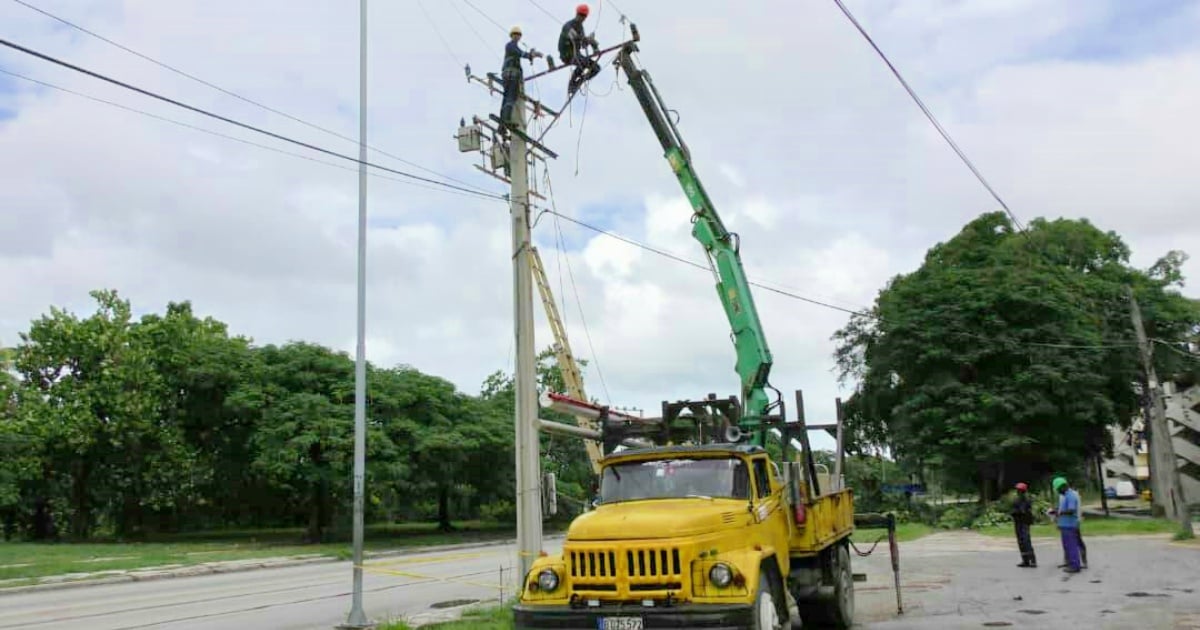
The Cuban government announced in a brief statement that the National Electric System (SEN) is now synchronized.
Minister Vicente de la O' Levy reported that the National Electro-Energy System is now synchronized. Work is underway in the western provinces on circuit connections, pole installation, and electrical wiring. Havana has begun receiving power and has 81 MW "served," according to the publication on the X account of the Presidency of Cuba.
The minister's statement was made during a meeting in which he reported to Miguel Díaz-Canel on the recovery efforts following Hurricane Rafael’s passage through the western region of the country.
This Friday, the Electric Union (UNE) also stated on X that the "Lidio Ramón Pérez" Thermal Power Plant (Felton) was already stabilizing its load and contributing to the recovery of the National Electric System.
Earlier today, the Electric Company of Havana reported that recovery efforts were ongoing following Hurricane Rafael's passage through western Cuba.
The entity indicated that by that time, of the 337 primary distribution circuits, 305 circuits had been inspected and evaluated, and electrical service had been restored to 143,468 clients across 50 circuits.
Additionally, service had been reactivated in eight circuits supplying hospitals and in two water supply circuits, reaching an overall recovery progress of only 15.1%.
The company added that during the assessments, 90 fallen poles were detected, of which 30 belong to the Plaza and Cerro municipalities.
As of the closing of this report, there are no further details regarding the announced synchronization of the National Electric System.
On Wednesday, before Hurricane Rafael made landfall in Cuba, the Electric Union announced that the strong winds associated with the weather phenomenon had caused the disconnection of the National Electric System, and that "contingency protocols" would be implemented.
Notice of "voluntary disconnection"
Before the general disconnection of the national electrical system, the Electric Union and the Ministry of Energy and Mines had stated that once the winds of Hurricane Rafael reached 60 km/h, a "voluntary disconnection" of the electrical circuits in the areas affected by the winds would be carried out to prevent damage to the infrastructure and protect people's lives.
"We always do this, every time an event of this nature occurs, to prevent damage to the infrastructure and also potential harm to individuals from the fall of any energized conductor. It is always important that when winds reach 60 km/h, we proceed with the automatic disconnection of the circuits," said Lázaro Guerra Hernández, General Director of Electricity at the mentioned ministry in statements to Cuban Television.
However, what is surprising for Cubans is that the disconnection was nationwide, including areas that were not affected by the hurricane.
On the other hand, the Electric Union had already predicted outages on Wednesday amounting to 1,354 MW during the night, a figure that was estimated to be even higher—specifically 1,400 MW—during the day.
This means that, in addition to the damage caused by the hurricane, many Cubans were already without electricity long before.
The prolonged blackouts in recent hours even led to a protest in the town of Encrucijadas, in the province of Villa Clara.
What do you think?
VIEW COMMENTS (2)Filed under: